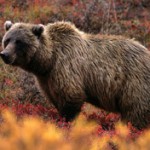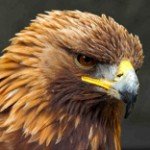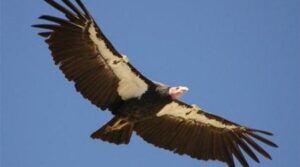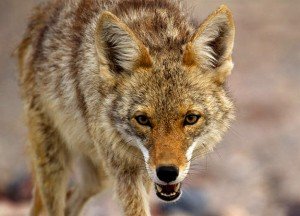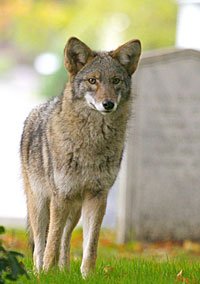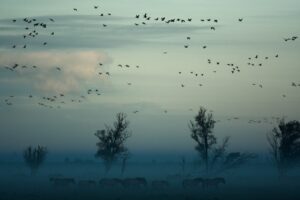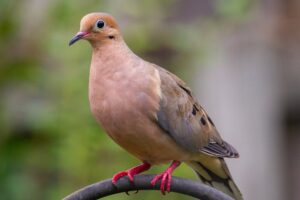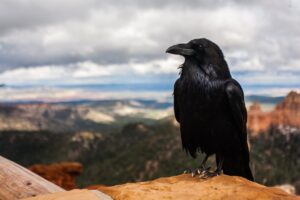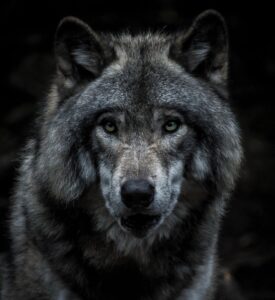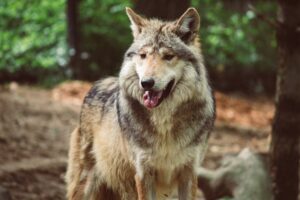-
Email[email protected]
-
Phone562-216-4444
Wild Species Information
Wildlife Species
The purposes of [the Endangered Species] Act are to provide a means whereby the ecosystems upon which endangered species and threatened species depend may be conserved, to provide a program for the conservation of such endangered species and threatened species, and to take steps as may be appropriate to achieve the purposes of the treaties and conventions set forth in subsection (a) of this section…”
“The Legislature further finds and declares that it is the policy of the state to conserve, protect, restore, and enhance any endangered species or any threatened species and its habitat and that it is the intent of the Legislature, consistent with conserving the species, to acquire lands for habitat for these species…”
– California Fish & Game Code Section 2052, a section within The California Endangered Species Act
The regulatory framework at both the federal and state level, provides environmental organizations the foundation for challenging the use of traditional ammunition consisting of lead components. One of the most important factors regarding environmental regulations involving threatened or endangered species, at either the federal or the state level, is habitat. Habitat regulations have a direct impact on land acquisitions, regulations, land use and management.
Restrictions on public and/or private land use, based upon potential impacts to threatened or endangered species, can significantly limit or preclude human activity. The activities are not necessarily limited to commercially consumptive uses, and can seriously impact recreational activities such as camping, hiking, biking and, of course, hunting or recreational shooting on or around protected habitat.
Land designated as critical habitat for any listed species may be set aside, eliminating human activity outside of scientific research. Unfortunately, a number of listed species frequently occupy lands outside specifically designated critical habitat. Accordingly, endangered or threatened species are used as justification for implementing onerous restrictions on tracts of public and private lands outside designated habitat.
Environmental activists also use the endangered or threatened designation of apex predators (i.e. top of the food chain predators) to influence control over vast tracts of land. The large territorial requirements of such predators as wolves and bears significantly impact both commercial and recreational activities, eventually making those activities too costly or burdensome to continue.
By implementing the sustainability theory, inherently embedded in the environmentalist’s North American Model, hunting is adversely impacted by the listing of large predators pursuant to the Endangered Species Act (ESA). Under this model, large predators have a superior claim on such common game species as deer, elk and moose. Additional increases in the already large predator populations require game managers to dedicate more of each season’s allowable harvest of huntable game for consumption by listed predators. This results in the reduction of available game for hunting management quotas, and can lead to decreased economic activity from hunting.
Environmental activists also use threatened or endangered species to influence and change regulations, land use and management practices. Environmental activists involved in the California Condor Recovery Program are well aware that the introduction of a listed species in close proximity to tracts of land capable of being developed, or used for commercial and hunting activities, can restrict land use and management, while also affecting the value of the land. In a number of cases, the listed species is the catalyst for use restrictions, condemnation of land or even acquisition by the very same environmental activists seeking concessions. For example, the Tejon Ranch and the newly formed Tejon Ranch Conservancy’s use of the California condor elucidates this questionable interplay.
Understanding critical habitat requirements and restrictions of listed or candidate species under the ESA enables hunters and recreational shooters to become more adept at countering overly restrictive or prohibitive regulations intended to restrict hunting and recreational shooting sports. Further, understanding that economic arguments are ineffective when the designation of critical habitat for a species is at stake, allows stakeholders to be more effective when lobbying to defend hunting and shooting sports.
Hunt for Truth is dedicated to investigating and producing objective evidence regarding the potential impacts of the use of lead ammunition on both listed and candidate species under the ESA. In those cases where the research is faulty, and objective scientific evidence of a causal link between lead ammunition and harm to species is lacking, Hunt for Truth will present the truth to legislators, regulators and the public at large in order to facilitate a more comprehensive debate.
List of Species
Bear
Bald Eagle
California Condor
Coyote
Migratory Birds
Mourning Dove
Raven
Trumpeter Swan
Waterfowl
Wolves
Black Bear
The American black bear is the most widely distributed bear in North America to its current population levels, International Union for Conservation of Nature classifies the black bear as of “least concern” regarding threats to its existence.
There are as many as 16 different subspecies of Black bear listed in North America, with some such as Florida and Mexican black bears listed as endangered under the Endangered Species Act (ESA). Many subspecies are regulated as game mammals, and are hunted in limited regions within states such as California. Black bears are primarily omnivorous, feeding largely on vegetable matter, nuts, berries and insects. They are known, however, to be predators of young ungulates such as fawns of deer, and calves of elk and moose. Black bears are also known predators of bald eagle nests, and have been recorded raiding cave nests of California condors and killing condor chicks.
Hunt for Truth is investigating black bear predation on California condors, especially in the context of future condor reintroduction sites as in Yurok tribal lands in Northern California, and in Oregon’s Columbia River Valley.
Black bear have also been known to scavenge available carrion. As such, environmental activists contend that the potential for lead poisoning from hunter’s game left in the field may call for additional lead ammunition bans. Hunt for Truth is currently investigating allegations of poisoning and mortality related to secondary ingestion of lead shot and lead bullet fragments contained in carrion.
Grizzly Bear
The grizzly bear (Ursus arctos horribili), is a large land omnivore currently occupying portions of the Northern Rockies within the lower 48 states, Canada and significant portions of Alaska.
Male grizzlies in the lower 48 contiguous states can reach average weights up to 600 pounds, while occasionally growing to as much as 1,000 pounds. Female grizzlies can reach average weights of up to 350 pounds. When standing on their hind legs, grizzlies can reach heights greater than 8 feet. A sprinting grizzly bears can achieve land speeds up to 45 miles an hour over varying distances.
As an apex predator, grizzlies utilize a wide variety of food sources. These include wild ungulates (moose, elk and deer), buffalo, fish, livestock (cattle, horses, and sheep), black bears, carrion, insects, and a wide variety of vegetable matter (white pine nuts and grasses).
Grizzly bears normally can live an average of 25 years or more in the wild, with specimens in captivity living as long as 40 years.
Grizzly bears are solitary other than during breeding season, and can utilize home ranges estimated as large as 187 square miles for females, and 505 square miles for males. Grizzly bears will defend food, territory and “personal space” to varying degrees, which in turn can cause fatal interactions with humans.
Grizzly bears were listed as threatened under the ESA on July 28, 1975 for the lower 48 states. Grizzly bear Recovery Zones are identified in Montana, Wyoming, Idaho, Washington State, and the San Juan Mountains in Colorado, totaling at least 38,700 square miles of important habitat. Additional reintroduction zones are being considered in Colorado and the Bitterroot Zone in Idaho and Montana. Currently there are no critical habitat designations for the Grizzly bear.
On March 22, 2007, a Distinct Population Segment of grizzly bears in the Yellowstone National Park Recovery Zone was delisted as a recovered population, no longer meeting the definition requirements for a threatened listing under the ESA. That delisting was later vacated in a Montana Federal District Court on September 21, 2009. While the U.S. Fish and Wildlife Service is appealing that ruling, the Yellowstone Distinct Population Segment remains designated as threatened.
Due to the grizzly bears reliance on carrion as a food source, certain researchers have inferred that grizzlies are threatened by ingestion of lead ammunition fragments from gut piles and game lost by hunters. Recently, however, a 2011 study undertaken by Craighead Beringia South and the University of Montana found that grizzly bears in Greater Yellowstone, where hunting is prohibited, had high blood-lead levels that were not linked to lead ammunition. The high blood-lead levels noted in the study and the conspicuous absence of a causal link between the blood-lead levels and hunters’ lead ammunition, directly indicate an alternative source of lead in the environment. Hunt for Truth continues to review studies addressing blood-lead levels in grizzly bears and other wildlife species for any objective and credible evidence allegedly linking lead poisoning to lead ammunition.
Eagle
The bald eagle (Haliaeetus leucocephalus) is a New World bird of prey. Its current range extends from the Arctic Circle, Alaska and Hudson’s Bay to Mexico.
Bald eagles are relatively large raptors, weighing up to 15 pounds. Bald eagles are also dimorphic, wherein females are as much as 25% larger than males. Northern subspecies appear to be subject to Bergmann’s rule, in that Haliaeetus leucocephalus washingtoniensis, a more northern distributed subspecies, is generally larger in body size and mass than Haliaeetus leucocephalus leucocephalus, the more southern distributed subspecies commonly found as far south as Florida and Mexico.
Bald eagles prey primary on fish, however, they will also prey on waterfowl, small mammals and are known to scavenge carrion found naturally, and at fish processing operations in North America.
Previous causes of mortality included takings for scientific collections, exposure to the organochlorine insecticide dichlorodiphenyltrichloroethane (DDT) and other pesticides and collisions with aircraft, power lines and power towers.
Bald eagles were previously listed as endangered under the Endangered Species Act (ESA) in 1967, after protection was extended to Bald eagles and Golden eagles through the Migratory Bird Treaty Act (1918) (MBTA) and the Bald Eagle Act (1940). After the banning of DDT in the United States in 1972 and subsequent limitations on it’s use in Canada, bald eagle populations rebounded, resulting in a delisting from full protection under the ESA in June,2007. Bald eagles are currently still protected under the MBTA and the Bald Eagle Act, as well as other State and Federal laws and regulations related to protection of raptors.
Environmental activists and researchers claim that bald eagles are increasingly being poisoned by ingesting lead shot in carrion of waterfowl and upland game left in the field by hunters. These same environmental activists and researchers again ignore alternatives sources of lead in the environment, other causes on death that are summarily blamed on lead poisoning and the fact that bald eagle population levels are soaring. Hunt for Truth is currently investigating allegations of lead poisoning and mortality from secondary ingestion of lead shot and projectile fragments contained in carrion of wildlife and waterfowl.
Golden Eagle
Golden eagles (Aquila chrysaetos canadensis) are widely distributed “true eagles” in North America. Golden eagles can grow to 3 feet long with a wingspan of up to 7 feet, and can weigh up to 15 pounds. Golden eagles are dimorphic, wherein females are larger than the males of the species. Golden eagles can live between 15 to 20 years in the wild.
Golden eagles range broadly across the North American continent, and can utilize home ranges of 60 to 160 square miles. Golden eagles are opportunistic and powerful predators capable of preying upon large rabbits and hares, wild and domestic lambs, fawns, kids, and large waterfowl such as geese. When used in falconry, eagles have been noted to be capable of taking wolves, coyotes, foxes and domestic dogs. They are also known to prey upon marmots and groundhogs, along with such species of concern as pika.
Currently, golden eagles are protected under the Bald Eagle Protection Act (1940). They are also protected under the Migratory Bird Treaty Act (1918).
Causes of mortality include impact with man-made structures (wind power fans, power towers), electrocution from power-lines, disease and limited exposure to environmental toxins and poisons used in animal control.
Like the bald eagle, environmental activists and researchers claim that golden eagles are being poisoned by hunters’ lead ammunition in carrion left in the field. Hunt for Truth is conducting research on claims by researchers related to golden eagles and the ingestion of lead shot and projectile fragments in prey and carrion.
California Condor
California condors (Gymnogyps Californianus) are a New World vulture of the Cathartidae family. The condors have wingspans up to 9 feet, and weigh 16-31 pounds. Breeding maturity can be reached as early as the fifth year, and adults can be distinguished from juveniles by the orange coloration on the head and neck, and white panels on the underside of the wings. California condors are primarily monomorphic, making it hard to distinguish males from females at a distance except for the slightly larger size of the males.
Pursuant to the Condor Recovery Program identification system, condor # 1 has an estimated hatch year of 1966, showing that California condors can live in captivity at least 45 years (and counting).
One of the primary causes of the condor’s decline in North America began with the loss of megafauna ten to twelve thousand years ago. Further, the increase in whaling activities in the 1800s decreased the availability of large carcasses on the west coast, which was the mainstay of the California condor’s diet. Since that time, numerous activities have exacerbated the condor’s decline, including, harvests made by Native American for religious ceremonies and trade, scientific collection in the late 19th Century, and cattle ranching around the remaining condor ranges in Central and Southern California.
Increased development in California in the post-World War II era further reduced habitat and food sources of the condor. Additional factors such as reduction in the size of cattle ranches and cattle as a new food source, power lines and the use of insecticides like DDT all had detrimental effects on the California condors. As a result, the condors’ population declined to near extinction in the 1980s.
Condors were first listed as protected species in California in 1967, and were federally listed under the Endangered Species Act (ESA) in 1973. As of April of 2011, there were some 394 California condors in the world population, with roughly half in captivity. While condors located in California are listed as endangered, a number of condors released in Arizona and Utah are classified as section 10(j)-nonessential/experimental, as that term is defined under the ESA, to the survival of the species.
All current free-flying California condors are descendants of captive breeding in the Condor Recovery Program initiated in the early 1980s. All original remaining wild, free-flying condors captured by 1987 remain in captivity. While the breeding program started off with 5 wild and inter-related females in 1987, all captive and free-flying condors are primarily descendants of just 4 females, Condors # 10, 11, 12, and 13. Thus, the possibility of a genetic bottleneck contributing to the eventual demise of the species is extremely high, and a natural recovery may not be possible due solely to the genetic factor.
In the wild, mature California condors lay eggs once every other year. In captivity, California condors have been induced to produce 2 or 3 eggs in each successive season by the process of “double clutching” or “triple clutching.” In double clutching, the laid egg is removed from the artificial nest early enough that the female is capable of laying a second or in some cases a third egg, in the same season.
Naturally laid eggs can encounter failure rates between 50-100%. Captive laid eggs under human supervision have had greater than 50% failure rates, despite intensive veterinary monitoring. Hunt for Truth has learned through intensive research that the widespread use of DDT, other organochlorine pesticides, and certain rodenticides throughout the remaining condor habitat in Central and Southern California had serious and significant impacts on condor populations. The resulting adverse impact on egg survival rates due to pesticide exposure, coupled with a natural breeding cycle where condors only lay eggs naturally once every two years, population losses to inadequate food, and collisions with power lines and other building structures, have contributed to serious declines in the population by the late 1960s.
Hunt for Truth has also found that federal and state officials have long been aware of historical adverse impacts on condors by DDT and DDE pesticide residues. Hunt for Truth has uncovered that federal and state officials permitted the re-release of endangered California condors into the environment for “recovery” purposes, with the full knowledge that the historical DDT and DDE threat had not been mitigated.
Ventana Wildlife Society, a Condor Recovery Program partner, considers exposure to elevated levels of DDE to be the key threat to meeting condor recovery goals in California along the Big Sur Coast. The fact that Condor Recovery Program personnel at both the federal and the state levels had access to this information, combined with the fact that they are currently encountering egg-shell thinning related to DDE exposure, may mean that the knowing release of California condors into these hazardous geographies violates the ESA.
Since the designation of the California condor as endangered and the intervention by the Condor Recovery Program, there has been a significant controversy over the alleged poisoning and mortality of the condors, claimed to be linked to the ingestion of lead. While some researchers maintain that lead ammunition from gutpiles or game carrion left in the field by hunters is the primary source of lead exposure to condors, there is compelling evidence of alternative sources of lead in the environment. Such alternative sources of lead include paint chips from old buildings, legacy leaded gasoline in soils, mining wastes, old insecticides and microtrash.
One such noted exposure to an alternative source of lead in the environment was discovered at Pinnacles National Monument, where condors # 317 and 318 were observed ingesting lead paint fragments from the North Chalone Fire Lookout Tower. In turn, these parents fed the regurgitated lead paint fragments to their fledgling (# 550). Condors # 317, 318 and 550 were all tested and found to have high blood-lead levels, while # 550 had to be evacuated to the Los Angeles Zoo for intense treatment for lead poisoning.
The first condor to be identified as a lead-related mortality was Condor # 19 in March of 1984. According to the condor’s medical file, no forensic analysis was performed on a 7-8mm metallic fragment reportedly recovered from the “gizzard,” though necropsy personnel reported being able to cut the fragment with a metal scalpel.
Rarely, if ever, has an actual projectile fragment been found in the digestive tract of a California condor. However, objects that were thought to be projectile fragments were subsequently found to be pieces of gravel or a “woody” substance, not from ammunition. Hunt for Truth has discovered that many of these researchers “cherry picked” this information, deleting it and often refusing to present the underlying information to scientific peer review, policy makers and the public at large. This activity by the researchers calls their very claims and conclusions into serious question.
The purported link between the use of lead ammunition and the poisoning and/or mortality in condors is further weakened by the failure of California’s lead ban to successfully combat lead poisoning in wildlife. Assembly Bill (AB) 821 was passed out by the California Legislature on September 5, 2007 and enrolled September 10, 2007. Governor Arnold Schwarzenegger signed AB 821 on October 13, 2007, just after the Concord Fish and Game Commission hearing which banned the use of lead centerfire ammunition while hunting big game in the condor range. The bill was predicated and passed on its proponents’ assurances that hunters’ lead ammunition was the cause of lead related poisoning and deaths in California condors.
Since the passage of AB 821, the California Department of Fish and Game wardens have surveyed the types of ammunition used by hunters in the Condor Zones during hunting season, where the use of lead ammunition is banned. Despite 98.89% hunter compliance with AB 821, the 2009, 2010, and 2011 condor blood-lead data, collected by the Condor Recovery Program in California, shows that the incidence of lead exposure and poisoning in condors remains static and actually increased slightly.
Hunt for Truth believes that the combination of: 1) the 2009, 2010, and 2011 blood lead data; 2) the passage of AB 821, and; 3) the Department of Fish and Game’s evidence of 98.89% hunter compliance with the lead ban, strongly indicate that hunters’ ammunition is not the cause of lead exposure and toxicity in condors and alternative sources of lead are to blame.
Those attempting to impede hunters’ rights through the prohibition of traditional ammunition consisting of lead components have used the California condor as a propaganda tool to advance their campaign. Hunt for Truth continues to investigate the truth about the purported nexus between traditional ammunition and lead poisoning and/or mortality in California condors.
Coyotes
Urban Coyote Intrusions
Urban coyote populations have risen dramatically during the last decade, most prominently in Illinois, Colorado, and California, where a rising frequency of attacks on domestic pets and children have communities frightened. Given the coyote’s ability to reproduce at exponential rates, and the lack of predators that feed on coyotes, their incursions into urban communities create dangerous long-term consequences that are not being adequately addressed by cities or state fish & game authorities. In many urban areas coyotes have become habituated to seeing man’s pets and man himself as a food source, which has resulted in countless scary encounters.
Contact the Fish & Game Commission
The California Fish & Game Commission is currently being lobbied by animal-rights groups like the Humane Society and Project Coyote to give state-wide protected status to California’s coyote populations so that coyote populations will soar. Allowing this to happen could have catastrophic results for cities and towns.
Without active management, this growing and dangerous rapidly repopulating predator will continue to overrun our neighborhoods.
Click on the button below and send a message to the California Fish & Game Commission stating that you want something done about the increasing threat of urban coyote attacks on pets and children, and that you want the Commission to adopt a predator management plan that considers the local impact of increased coyote and other predator populations. Tell the commissioners to reject the misguided approaches being pushed by Humane Society and Project Coyote.
Also, encourage your local officials to stand on the side of the safety of their community and control coyote populations. Tell your local officials to let the Commission know the coyote intrusion problem needs to be solved by less coyotes, not more! Let the Commission know that you want a solution to the coyote problem now.
So-called “animal activist” groups such as the Humane Society of the United States (HSUS) and Project Coyote have marketed the concept of accepting these levels of harm to pets and children as a natural consequence of Mother Nature. Both groups have worked to overturn the current protocols in place with the North American Wildlife Management Model. In place of this model that has served the U.S.’s human-wildlife balance so well for well over 100 years, they advocate that urban communities should “co-exist” with this dangerous predator by keeping their children and pets indoors, and chase after packs of coyotes banging on pots and pans.
Both HSUS and Project Coyote have aggressively promoted this type of wishful thinking, with the sophomoric approach of “coyote hazing”. Numerous peer-reviewed studies have shown that such “hazing” has been unsuccessful as a long-term solution: “Once coyotes have begun acting boldly or aggressively around humans, it is unlikely that any attempts at hazing can be applied with sufficient consistency or intensity to reverse coyote habituation.”[1] Nevertheless, these groups continue to push this fallacy, trying to pass it off as legitimate wildlife management policy that state fish & game authorities should adopt. And, they try to convince communities suffering from coyote issues that it is the only option.
Published peer-reviewed studies have demonstrated that most attacks have followed increasingly bold urban coyote behaviors such as sightings during daylight hours, attacks on pets on leashes, chasing of joggers and bicyclists, as well as mid-day sightings in and around children’s play areas.[2] This is not indicative of an animal that would be deterred by mere “hazing.” And those same studies show that coyotes demonstrating such behavior are likely too far beyond being susceptible to “hazing.”
In a 2007 study entitled “A Review of Successful Urban Coyote Management Programs implemented to prevent or reduce attacks on Humans and Pets in Southern California,” trapping was found to be the most effective way to remove coyotes and re-instilling their fear of humans. In other cases, permanent removal was the only option when dealing with highly dangerous and threatening coyotes.[3]
[1] Baker, Rex O., (2007) A Review of Successful Urban Coyote Management Programs Implemented to Prevent or Reduce Attacks on Humans and Pets in Southern California, Wildlife Damage
Management Conferences — Proceedings. Paper 58
[2] Timm, R. M., Baker, R. O., Bennett, J. R., & Coolahan, C. C. (2004) Coyote Attacks: An Increasing Suburban Problem, Proceedings of the Twenty-First Vertebrate Pest Conference, 1.
[3] Timm, R. M., & Baker, R. O. (2007) A History of Urban Coyote Problems, Wildlife Damage Management Conferences – Proceedings, 76
View the full size and sources cited here: Coyote-Facts-Sheet
WHY THE HSUS MODEL OF CO-EXISTING WITH COYOTES DOES NOT WORK:
-
“Hazing: is not a long-term solution for dealing with the rapidly growing urban coyote population.
-
Coyote experts have explained that “once coyotes have begun acting boldly or aggressively around humans, it is unlikely that any attempts at hazing can be applied with sufficient consistency or intensity to reverse coyote habituation.”
-
Coyotes are smart, adaptive creatures and quickly become accustomed to human interaction, and will eventually not be frightened by hazing, if at all.
-
Coyotes have already shown less fear when encountering a human who has attempted to haze the coyote. In many cases, they will not react and stand their ground.
-
Hazing is less effective when there is a large number of a coyotes present.
-
Hazing can pose potential physical risks to people confronting coyotes that Project Coyote and HSUS have not discussed.
-
-
HSUS states that attacks on humans are rare, but in comparison to what?
-
Though attacks may have been statistically rare in the past, urban coyote population growth has rapidly increased. The number of coyote encounters has increased; that the number of attacks on humans has already risen and will likely continue to do so.
-
Attacks on pets and people can be made even more rare, as they used to be, by returning to coyote management policies that have been proven to work.
-
-
Coyote prey on midlevel predators, which includes cats that are either feral or family pets.
-
A coyote does not have the ability to distinguish a feral cat from a family pet.
-
The HSUS believes a solution to this problem is to keep your pet indoors after dusk, but coyotes have been seen roaming neighborhood streets in broad daylight and entering people’s property.
-
Restricting your pet to staying indoors is inhumane and does not give your pet the potential to live a full lifestyle.
-
-
Coyotes can track possible prey for weeks
-
Coyotes are known for their ability to be stealthy. They have also been known to return to a sight once they feel a meal is easy to come across.
-
Documented attacks on children, teenagers, and adults have stated that the coyote has attacked the human from behind.
-
Are children safe in public areas such as playgrounds where coyotes can lurk nearby?
-
-
The coyote’s rate of reproduction can lead to litters of up to 19 pups.
-
With coyotes reproducing at this rate, urban coyote populations may soon overrun our cities without management.
-
Most animals with protected status have reproduction rates of 1-2 offspring; coyotes’ litters are more comparable to those of a rat.
-
And their pups’ survival rate increases expotentially in urban environments, making their numbers increase even quicker.
-
WHAT DO EXPERTS SAY IS THE SOLUTION?
There is no single fix to the problems raised by urban coyotes. But, unlike the “co-existing” approach, the experts overwhelmingly advocate at least some lethal controls. Southern California coyote expert Rex Baker, who has participated in writing numerous papers on coyotes, has stated that lethal controls such as trapping and sometimes shooting are the most effective tools in removing problem coyotes, stopping aggressive behavior, and re-instilling fear of humans.
Baker has observed that lethal removal of problem coyotes can, in some cases predictably, cause the remaining coyotes to either leave the area or become much more wary of humans, a behavior that may persist for quite some time.
There is no scientific support that lethal controls of coyotes increase their populations. Regardless, population sizes are not as important as behavior.
PEER REVIEW STUDIES:
Coyotes Nipping at our Heals: A New Suburban Dilemma – Robert M. Timm(2007)
A History of Urban Coyote Problems – Robert M. Timm, Rex O. Baker [2007]
Sheep-Killing Coyotes a Continuing Dilemma for Ranchers – Robert M. Timm, Guy E. Connolly [2001]
The Urban Coyote Problem in Los Angeles County – Robert G. Howell [1982]
MAP OF COYOTE ENCOUNTERS IN ORANGE COUNTY
View a map of documented sightings of coyotes in Orange County
VIDEOS OF COYOTE SIGHTINGS, ENCOUNTERS, AND ATTACKS
READ ARTICLES ABOUT COYOTE SIGHTINGS, ENCOUNTERS, AND ATTACKS
Burbank Residents Inundated, Scared By Large Packs Of Coyotes
Coyotes In Hancock Park Have Residents On Edge
Irvine father: ‘Huge’ Coyote Hunted his Baby Boy
Laguna Beach Residents Warned To Keep Pets Indoors After Multiple Coyote Attacks
Coyote Drags 2 Year-Old Girl at Southern California Cemetery
Toddler Attacked By Coyote In Colorado Springs
Coyotes Attack Colorado Man Walking to Work
Migratory Birds
Migratory birds are those birds listed as protected under the Migratory Bird Treaty Act (1918) (MBTA).
Currently, the U.S. Fish and Wildlife Service notes that some 836 species of birds are protected under the MBTA, of which 78 species are listed as endangered and 14 species are listed as threatened under the Endangered Species Act (ESA). An additional 144 MBTA species are listed on the Birds of Conservation Concern watch list, where populations are said to be declining precipitously.
Species protected under the MBTA include commonly hunted waterfowl, a wide variety of raptors, vultures, the California condor, crows, ravens, grackles, American woodcock and a large variety of seabirds.
Various causes of mortality to migratory birds include predation, disease, habitat loss and such anthropogenic causes as collisions with man-made structures (tall buildings, power poles, wind power turbines), poisoning (oil spills, pesticides), predation by feral cats, and “by catch” where sea birds are entangled in fishing nets and long lines.
Increased loss of habitat for migratory birds, notably waterfowl, due to pollution of soils, riparian environments, and aquifers can complicate environmental policy in the U.S. For example, the proposed construction of unlined wetland “ponds” in the Imperial Valley of California, where phosphate and selenium saturation of the soil within the mitigatory wetlands is estimated to occur in as little as 4-5 years. Contamination could result in violations of the “strict liability” language of the MBTA, which is currently being evaluated by the U.S. Fish and Wildlife Service and various environmental groups.
On December 19, 2010, the U.S. Fish and Wildlife Service banned lead ammunition for all take of migratory birds under the Depredation Order for blackbirds, cowbirds, grackles, crows and magpies in order to prevent alleged toxicity hazards to other wildlife. There is concern that the MBTA can be used like the ESA to promulgate more hunting and recreational shooting restrictions, including the use of lead ammunition.
Hunt for Truth is currently evaluating allegations regarding lead poisoning in migratory birds and upland game due to the ingestion of lead ammunition.
Mourning Dove
Mourning dove (Zenaida macroura) are widely distributed members of the Columbidae dove family. Current populations in North America are estimated at roughly 350 million birds.
Mourning doves are relatively small, weighing up to 6 ounces in the wild, with overall lengths and wingspans up to 17-18 inches. Mourning doves feed primarily on seeds found on the ground, and are capable of drinking brackish water that is otherwise non-potable to other species.
Mourning doves are especially fecund, capable of laying eggs in clutches of one to three as many as two to six batches per breeding season.
Mourning doves can achieve speeds up to 45 miles per hour and possess great maneuverability, making them a challenging game to hunt. Mourning doves are one of the most widely hunted game species in North America, with some 20 million birds taken annually.
Other forms of mortality to mourning doves include native and feral animal predation, and diseases like trichomoniasis that spreads through the use of birdbaths and bird feeders in urban and suburban settings. Mourning doves are also potential vectors for West Nile Virus and avian influenza.
Mourning doves are regulated by the Migratory Bird Treaty Act (1918), where hunting seasons and bag limits are set in the various states where dove hunting is permitted under the oversight and consultation with the U.S. Fish and Wildlife Service.
Environmental activists and researchers have widely promoted lead ammunition bans for hunting migratory upland game, claiming that mourning doves routinely mistake lead shot for seed. Mourning dove hunting, however, tends to occur in restricted or fixed locations within small areas that are very attractive to this species (i.e. cultivated fields, fence-rows, water sources), and may not be representative of the manner in which other upland game species are hunted.
While some studies claim that there is evidence that mourning doves ingest spent lead shot believing it to be a food source, it was determined that although large amounts of shot were deposited in localized hunting areas, only a very small proportion of that shot may actually be available to feeding doves. Additionally, lead ingestion studies claiming that lead shot can cause poisoning in doves have been proven to be flawed because the methodology of unnatural force feeding of the birds does not replicate natural feeding conditions in the wild. Hunt for Truth is reviewing the numerous studies with claims related to the ingestion of lead ammunition for objective evidence of lead poisoning in mourning doves.
Raven
Common raven (Corvus corax) are members of the crow family and are widely distributed in Northern Canada, the Western United States, Alaska, portions of Western Mexico and the Appalachian mountains east of the Mississippi River.
Due to their range and habits, the common raven is protected under the Migratory Bird Treaty Act (1918).
Raven can reach lengths up to 27 inches long, and wingspans of about 4 feet. Raven can also achieve weights up to 5 pounds. In appearance, raven are shiny black like crows, but have a humped shaped beak and are more solitary and territorial than crows.
Raven are extremely adaptable, and have successfully exploited human development more than a large number of species. Raven take advantage of landfills and road kill for a food source, as well as being a known predator of endangered species such as juvenile desert tortoises, eggs of California condors, and the young of Marbled murrelets and Least terns. Raven will arrive “on scene” to road kill carcasses and other domestic and wildlife carrion hours before larger scavengers, such as vultures and California condors.
Raven are known for not only raiding landfills, but foraging carrion left behind by both hunters and apex predators. Researchers in Wyoming have allegedly linked lead projectile fragment ingestion by raven to gutpiles left in the field by hunters. These same researchers consider raven as “surrogates” for lead fragment ingestion by species listed under the Endangered Species Act, such as grizzly bears and the formerly listed Northern Rocky Mountain Wolf-Distinct Population Segment in Wyoming, Montana, Idaho, and parts of Utah, Washington and Oregon.
Hunt for Truth is monitoring raven management and control plans for any indication of objective evidence that ingestion of lead ammunition by ravens is the cause of lead poisoning.
Trumpeter Swan
The trumpeter swan (Cygnus buccinator) is a member of the Anatidae family and is the largest waterfowl in North America.
Trumpeter swan can achieve lengths of up to 62 inches long, wingspans of almost 7 feet and weigh as much as 37-38 pounds. Trumpeter swan can be long-lived, living up to 24 years in the wild and 32 years in captivity. Trumpeter swan start reproduction at ages of 3-4 years, and form relatively permanent pair bonds.
Trumpeter swan have good reproductive potential, capable of laying clutches of up to 8-9 eggs per breeding season. Trumpeter swan are generally “dabbling” feeders in pond and lake environments, though they are also thought to feed in agricultural fields adjacent to water areas.
Trumpeter swan were once widely distributed throughout major portions of North America, but were hunted heavily both for meat and for the millenary trades in the 19th Century. In 1908, trumpeter swan fell under the protection of the Migratory Bird Treaty Act (1918), and populations have rebounded within core habitats in Alaska, western Canada and portions of Washington State. Trumpeter swan have also migrated as far south as Arkansas since population levels began increasing.
Trumpeter swan were once considered candidates for listing under the Endangered Species Act, but discovery of additional swan populations in Alaska caused them to be removed from listing. Trumpeter swan can be listed as protected under a number of state regulations.
Environmental activist have long alleged that trumpeter swan are poisoned by lead shot found in the sediments around waterfowl hunting areas. Researchers maintain that the trumpeter swan’s long neck and feeding habits cause them to pick up and ingest residual lead shot in shallow sediments.
Hunt for Truth is currently reviewing documentation regarding claims that lead ammunition from upland game hunting is resulting in lead poisoning in trumpeter swan.
Waterfowl
Lead poisoning in waterfowl is extremely unique and is exclusive to certain species of ducks, swans and geese. While lead ammunition used for hunting waterfowl was banned in 1992, this was predominantly due to the aquatic environment in which the animals reside, and the unusual manner in which the species eat.
Waterfowl generally congregate in and around bodies of water, where lead shot can accumulate in the sediments of water bodies that are heavily hunted. The accumulation of shot can become problematic because of the non-selective way in which waterfowl feed. By sticking their head underwater and blindly sifting through sediments for seeds, bugs, etc., waterfowl can unintentionally ingest large amounts of shot.
The ingestion of shot is further compounded by the waterfowl’s unusual digestive physiology. Waterfowl have a very specialized gizzard that acts as a mechanical “grinder” to break down food items by muscular contraction and grinding of food against the sand/rocks within the gizzard. Waterfowl also consume harder food items like mollusks and hard shelled seeds to assist in the digestion of food. Within the gizzard of waterfowl, food is combined with sand, rocks, and, if swallowed, shot, which causes the lead to be ground down over a long period of time and become bioavailable to some extent.
Waterfowl present a unique circumstance not found in upland hunting. The combination of these unusual events in which a high concentration of lead shot accumulates in an aquatic environment, coupled with the non-specific feeding habits of waterfowl and the unparalleled processing and digestion of food makes waterfowl unique.
However, these circumstances, while unique to waterfowl are not an issue in non-aquatic situations, (ie upland game hunting practices), because lead shot is dispersed over a large area and embeds in the soil where it is not readily available for ingestion by wildlife. Furthermore, upland game birds do not commonly ingest lead shot. In those rare instances where upland birds do ingest lead shot, they do so while ingesting food items which stimulate the digestive process which causes the bolus of food to be rapidly swept out of the stomach, without a significant absorption of lead.
Wolves
The Gray Wolf
Gray wolves (Canis lupus) are apex predators found in the Great Lakes Region of the United States and Canada, as well as in the Northern Rocky Mountains and the Greater Yellowstone ecosystem.
In Minnesota, Michigan, and Wisconsin, the gray wolf is referred to as the eastern timber wolf. In the Northern Rockies and Greater Yellowstone ecosystem, the gray wolf is known as the Northern Rocky Mountain wolf. These last packs are likely a mixture of a reintroduced population of Canadian wolves and the remaining “original” wolves (Canis lupus irremotus).
Researchers at Stanford University published a report in 2009 stating that certain modern wolves exhibit characteristics spread from inter-breeding with domestic dogs. The researchers note that the introduction of dog genetics back into wild wolf populations may have occurred as long as 10,000 years ago, from dogs brought by aboriginal immigrants coming from Asia.
Gray wolves in North America can grow as long as 5 feet in length, and stand 3 feet at the shoulder. Weights can vary to 120 pounds, though some Northern individual gray wolves from Canada and Alaska have weighed as much as 179 pounds in the past.
Wolves are adaptive predators, feeding on ungulates (moose, deer, and elk), bison, beaver, rabbits and livestock (horses, cattle, and sheep). Wolves also scavenge available wildlife carrion when discovered.
Wolf populations were depleted uniformly across the United States with the western migrations of hunters and settlers who competed for game, and hunted wolves that preyed upon their livestock. Additional methods of wolf control programs included depredation hunting, trapping, poisoning of carcasses and the termination of wolf pups found in den sites.
Northern Rocky Mountain gray wolves were listed as endangered under the Endangered Species Act (ESA) on June 4, 1973. Due to a debate regarding taxonomical classifications, all species of wolves in the lower 48 states, save those in Minnesota, were classified as endangered on March 8, 1978. Wolves in Minnesota were listed as threatened, due to the size of the remnant population in the state. With the federal listing, wolf management by state level programs came under the purview of the U.S. Fish and Wildlife Service and the U. S. Department of Agriculture, the Animal and Plant Health Inspection Service and the Wolf Damage Management Program.
The Animal and Plant Health Inspection Service monitors and controls wolves demonstrated to have killed livestock. Since listing under the ESA, the majority of wolf mortalities from human interaction are due to management control efforts, though a number of illegal mortalities are also recorded by U.S. Fish and Wildlife’s Office of Law Enforcement.
After notice and public comment meetings, gray wolf reintroduction was established on November 22, 1994. Wolves were to be reintroduced in a remote area of Idaho, as well as Yellowstone National Park, under the ESA, Section 10(j) nonessential/experimental categorization.
The original plan called for 30 Canadian gray wolves to be introduced separately from an area where breeding and interaction with “native” Rocky Mountain gray wolves were not known to be occurring.
Over the life of the wolf reintroduction and recovery program, wolf populations have increased in both the Rocky Mountain and Great Lakes regions to the point that the U.S. Fish and Wildlife Service had published notices of delisting wolves under the ESA, despite significant wolf management efforts by the U.S. Department of Agriculture and the Animal and Plant Health Inspection Service personnel.
The Northern Rocky Mountain gray wolves were ultimately delisted from the ESA in 2011 over environmentalist’s active opposition.
The controversies regarding wolf depredation on livestock, as well as the above referenced depredation on ungulates favored by hunters (up to 30% reductions according to the Wolf Recovery Program estimates), have plagued the recovery program since gray wolf re-introduction in the 10(j) area.
Similar controversies related to livestock and domestic dog depredation also exist in the Eastern Timber Wolf management areas in the Great Lakes Region.
Like the grizzly bear, the gray wolf has been known to scavenge and environmental activist have alleged that the gray wolf may be subject to lead poisoning from hunted carrion left in the field. Hunt for Truth is monitoring efforts to expand lead ammunition bans due to the gray wolf, comparable to California’s AB 821 lead ammunition ban in the California condor ranges.
The Mexican Wolf
Mexican wolves (Canis lupis bailey), is a subspecies of wolf native to Arizona, New Mexico and Northern Mexico.
Mexican wolves can reach shoulder heights as much as 32 inches, grow as long from nose to tip of tail as 5 ½ feet, and can weigh as much as 80 pounds. Mexican wolves can live as long as 15 years in captivity.
Mexican wolves prey primarily on wild ungulates (deer, elk, and antelope) as well as opportunistically feeding on small mammals, rodents, and possibly livestock such as sheep and cattle. As such, sustainable use policies in Mexican wolf habitat can lead to reduced hunting quotas for big game species, so as to assure that there is sufficient game for the recovery of the Mexican wolf population across its historical range.
Currently only 50 or so Mexican wolves are thought to exist in the wild, predominantly in Eastern Arizona and Western New Mexico.
The Mexican wolf is currently listed as endangered, under the Endangered Species Act and is the subject of a captive breeding program involving the U.S. Fish and Wildlife Service and a variety of non-governmental program partners carrying out captive breeding in the United States. A recent reintroduction of Mexican wolves from Mexico may allow increased numbers of Mexican wolves to be released in a manner not subject to U.S. public comment and input as required under the National Environmental Policy Act. Livestock and hunting interests may need to be concerned with the additional effects of these wolves “dispersing” from Mexico on wild ungulate and livestock populations.
The “purity” of the Mexican wolf strain has been questioned at times, with Mexican wolves found in captivity to have a percentage of domestic dog genes. A number of Mexican wolves within the Mexican wolf captive breeding program have been euthanized because of hybridization with domestic dogs.
Like the gray wolf, the Mexican wolf has been known to scavenge, and environmental activists contend that the potential for lead poisoning from hunter’s game left in the field calls for additional lead ammunition bans. Hunt for Truth is monitoring the Mexican wolf recovery program and its participants.




